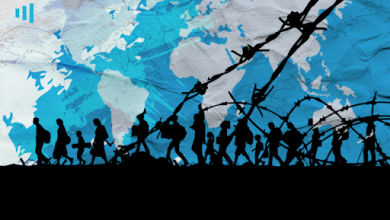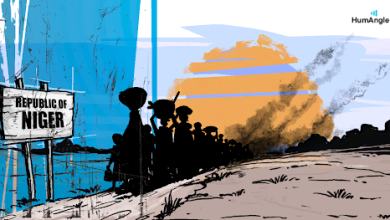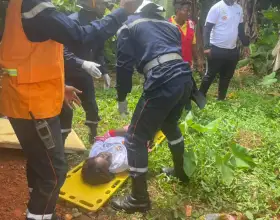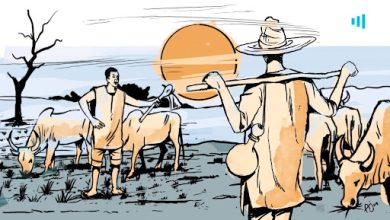Climate-linked Drought Exacerbates Somalia’s Food And Displacement Crisis
In many Somali communities, farming and livestock have been the major sources of income but the country is currently one of the most severely drought-impacted countries in the Horn of Africa since the beginning of 2022.
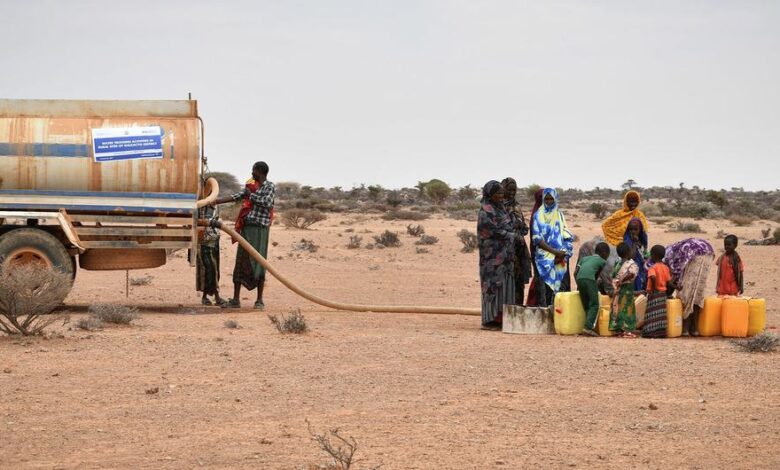
Climate-related drought is fuelling the food security emergencies in Somalia, as communities face difficulties meeting their daily food requirements amid compounding impacts of conflict.
With the East African country facing a fourth consecutive drought along with the impacts of COVID-19, flooding, and conflict, humanitarian experts warn that food insecurity has worsened the level of displacement and climate-related health emergencies.
Latest projections by the Food Security and Nutrition Analysis Unit (Famine Risk Analysis March 2022) and partners suggest a reasonable chance of famine occurring in six areas across Somalia through June.
These areas at risk of famine include the Hawd pastoral areas in Central and Hiraan regions, Addun pastoral areas in Northeast and Central, Bay and Bakool agro pastoral areas and IDPs settlements in Mogadishu, Baidoa, and Dhuusamareeb.
“These areas are currently classified in Humanitarian emergency (IPC Phase 4), with five to 10 per cent of the population facing famine catastrophe (IPC Phase 5) outcomes,” the report reads.
Other areas of concern include, Southern agro pastoral areas, the Southern rain-fed agro pastoral areas of Middle and Lower Juba, and Togdheer agro pastoral livelihood zones as well as IDP settlements in Burao, Garowe, Belet Weyne, Doolow and Kismayo.
As the current drought wipes out farm plants and livestocks, many farmers and herders are deprived of their source of income, leading to worsening nutritional outcomes among vulnerable people, as well as throwing them into extreme poverty.
Since Dec. 2021, extreme drought conditions have affected about 4.9 million people, with about 719,000 displaced from their homes as of March.
Families are being forced to leave their homes in search of food, water and pasture, putting strains on already-limited resources in other areas.
The UN Humanitarian agency warned that the drought emergency was decimating the lives of people whose coping capacities were already gnawed by decades of conflict, food shortages, climatic shocks, disease outbreaks, desert locust infestations, and the COVID-19 pandemic.
Given the dry season, the situation is compounded by scarcity of water. A report by the Integrated Food Insecurity Phrase classification (IPC) shows that an estimated 3.5 million people lack sufficient access to water, and more than 6 million people will need food assistance to prevent crises or worse outcomes this year.
This includes 1.7 million people who are expected to be in Emergency (IPC Phrase 4) and over 81,000 people to face famine and humanitarian catastrophe (IPC Phrase 5).
Humanitarian experts say the water scarcity is also a major driver of displacement in Somalia, increasing the spread of water-borne diseases such diarrhea caused by the consumption of unclean and unsafe water.
Many rural communities rely on shallow wells and water pans in which water levels have decreased significantly.
So far, the UN estimates that about 3.5 million people are in need of a wash facility including 1.5 displaced people. At least 1.8 million people were reached with various forms of assistance in Feb., but the escalating emergency calls for sustained scaling up of response and flexibility in reprogramming.
Reacting to the long-standing drought, the Government of Somalia had, in 2017, declared a state of national disaster due to a nationwide drought situation, requesting assistance from development partners in mitigating its impacts on communities and livelihoods.
Yet, the situation has continued to be even drier as people are forced out of their homes due to the drought conditions.
Eroded situation in IDPs camps
Somalia’s displacement camps are coming under intense pressure with more than 300,000 people leaving their homes in search of food and water as the country experiences its worst drought in decades.
Many displaced families solely rely on humanitarian services despite humanitarian access being impeded by ongoing hostilities.
Most of the displaced people have fled from the Galgaduud, Mudug, and Bay regions, with the majority of people self-settling in over 2,400 plus sub-standard IDP sites in urban and peri-urban areas across the country, according to an infographic by the UN humanitarian agency.
In most camps, poor sanitation and lack of ventilation are increasing the chances of disease outbreaks. Illnesses like measles and acute diarrhoea among children have been reported and so far, 1.4 million children under five years of age are malnourished.
For instance, in Luuq camp located in Gedo, Southwest Somalia, living conditions are becoming abysmal as more displaced people find their ways into the camp. Ali Mohamed, Luuq District’s administrator, said the situation is one of the biggest tragedies the district is facing.
“The displaced communities have no shelter, water, medicine, or even food, and they depend on handouts. The drought has wiped out everything, and if the survivors don’t get urgent humanitarian assistance, they are likely to also die,” Mohammed said.
Somalia is currently one of the most severely drought-impacted countries in the Horn of Africa, according to the United Nations Office for the Coordination of Humanitarian Affairs (OCHA).
Humanitarian aid
With Somalia’s food crisis being exacerbated by escalating food prices due to heavy reliance on wheat imports from Ukraine and Russia, aid workers are ramping up efforts to reduce the vulnerability being impacted by the drought. In March, World Food Programme (WFP) launched an anticipatory action intervention in the Xudur and Waajid districts of Bakool region, two of the areas hardest hit by drought.
Targeted 118,000 people will receive CBT through a scale-up of a national Safety Net for Human Capital Project; and a public information campaign through local radio, on practical measures to mitigate the impact of drought.
WFP also plans to scale-up relief assistance to reach 2.5 million people by June 2022.
Despite the scale up in distributing humanitarian aid, humanitarian agencies have said a critical gap in donor funding means they cannot sustain and scale up their support to meet the growing needs.
Support Our Journalism
There are millions of ordinary people affected by conflict in Africa whose stories are missing in the mainstream media. HumAngle is determined to tell those challenging and under-reported stories, hoping that the people impacted by these conflicts will find the safety and security they deserve.
To ensure that we continue to provide public service coverage, we have a small favour to ask you. We want you to be part of our journalistic endeavour by contributing a token to us.
Your donation will further promote a robust, free, and independent media.
Donate HereStay Closer To The Stories That Matter

